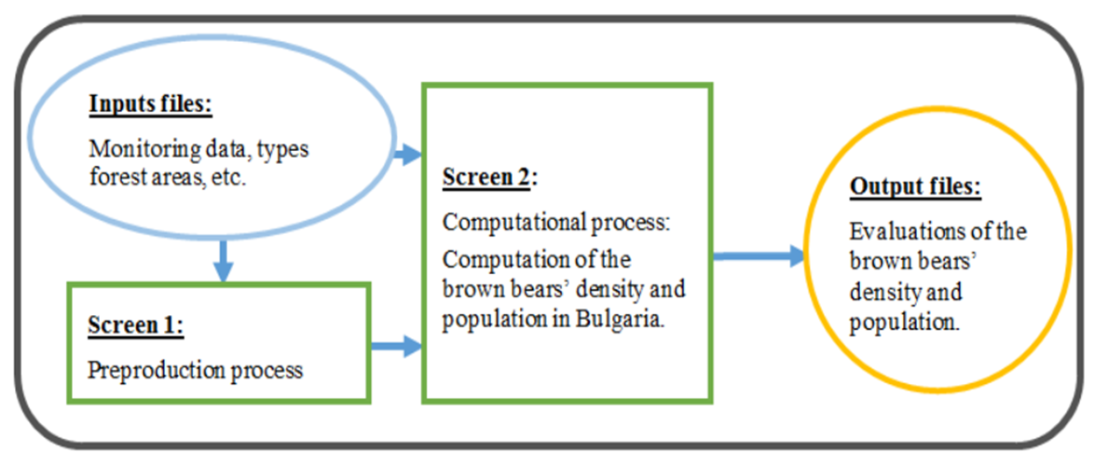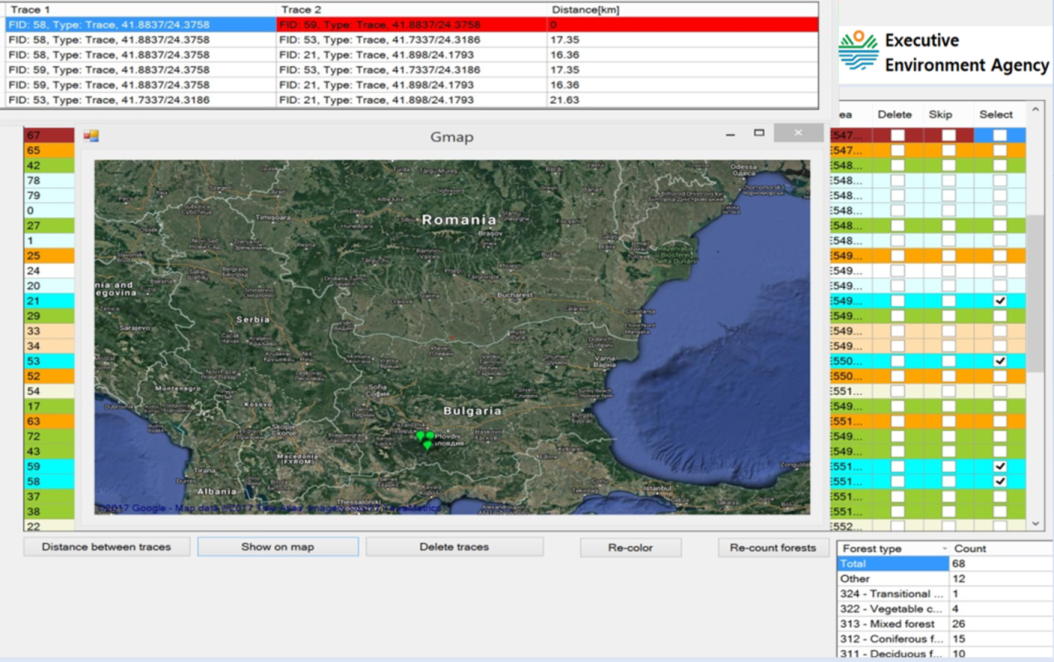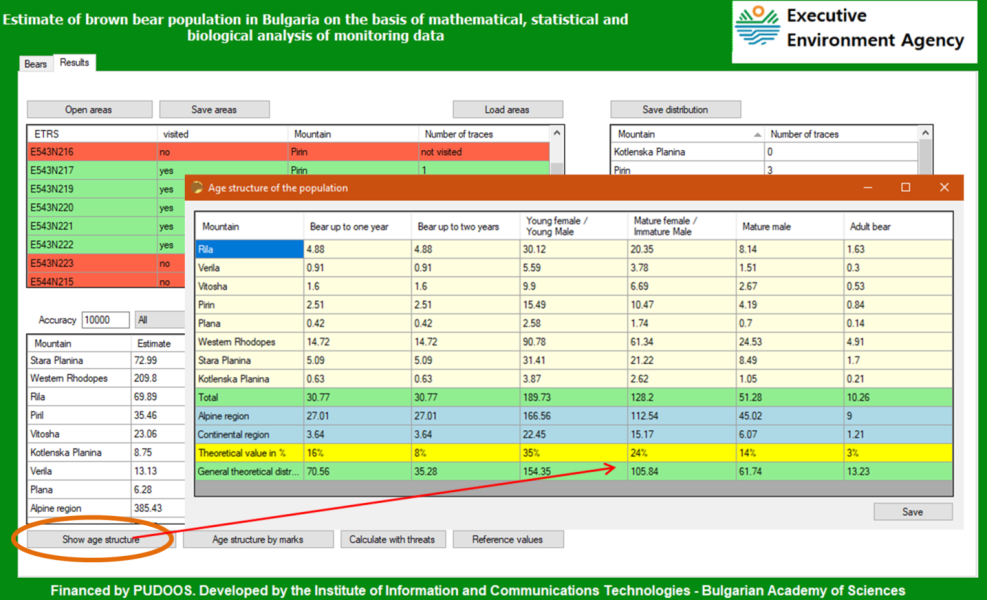NCC BULGARIA


NCC presenting the success story:
The National Competence Centre of Bulgaria (NCC-Bulgaria in the area of HPC, HPDA and AI has the goal to enhance and develop the competences of the Bulgarian computational community, making full use of EuroHPC resources and the EuroCC partnership.
NCC-Bulgaria is built by a consortium coordinated by the Institute of Information and Communication Technologies at the Bulgarian Academy of Sciences (IICT-BAS), and two members, Sofia University “St. Kliment Ohridski” (SU), and University of National and World Economy (UNWE). The partners collaborate with Sofia Tech Park, where the Discoverer EuroHPC supercomputer is operating.
Scientific/government partners involved:
The following scientific and governmental partners are involved:
The department of Scalable Computing and Applications (SCA) with HPC Centre is part of IICT-BAS. It manages the HPC centre with the supercomputer Avitohol. The department is focused on the development and deployment of Cloud middleware and software components, methods, algorithms, and applications suitable for Cloud and HPC computing systems.



Being the first and the richest natural history museum in the Balkans, the National Museum of Natural History (NMNH) at the Bulgarian Academy of Sciences studies preserves and disseminates information about living and non-living nature both in Bulgaria and throughout the world. NMNH is the only national institution directly engaged with the preservation of scientific collections of live and non-live nature from Bulgaria and the world. The study of biodiversity, environmental protection, and the evolution of organisms are the museum’s major priorities.Executive Environment Agency (EEA) is an administration with the Minister of Environment and Water to carry out management, coordination and information functions as regards the control and environmental protection in Bulgaria. It designs and manages the National System for Environmental Monitoring for monitoring and information on the state of environmental components and factors on the complete territory of the country. The Agency is a National Reference Centre within the European Environment Agency.
Technical/scientific Challenge:
The problems were related to the reliability of the provided data from the national monitoring, the approaches to determine the unique traces, and the application of the statistical algorithms. We encountered challenges when we integrated the sample areas (quadrats — 10 x 10 km) using ETRS89 and bear habitats in different forest types, through the CORINE Land Cover-2018 product. Other technical issues arose when we plugged into the HPDA service the GPS coordinates for the found bear’s footprints during the National monitoring.
Solution:
The HPDA service for estimating the brown bear population is written in C++ language and it incorporates statistical algorithms based on the maximum likelihood method. The statistical algorithms use data for the traces of the brown bears in their habitats. They are collected via the route method. The bear signs recorded included primarily footprints (width of fore paw footprint and length of hind paw footprint, but also excrements, and tree-marks. The field data are gathered annually as part of National monitoring, organized by the Executive Environment Agency each November.
Approaches for differentiating the footprints by sex, age, and different threats are also integrated into this service.
The monitored territories covered the habitats of the bears in the country, distributed in trial areas (squares—10 x 10 km) using ETRS89. In them, suitable routes have been chosen for finding traces of the species’ vital activity.
The habitats of the brown bear can be classified into five types of forests, using the classification as defined in CORINE Land Cover-2018 in the part of Bulgaria. CORINE Land Cover (CLC) is one of the most well-known and used products from the Copernicus Land Monitoring Service.
The output results of the HPDA service include (i) estimates for brown bear population and density in their habitats – Alpine and Continental areas and different mountains, (ii) estimates for age structures, and how threats influence of the population.
Scientific impact:
The HPDA service was developed for the needs of the Executive Environment Agency (EEA) which is an administration of the Ministry of Environment and Water in Bulgaria. By integrating statistical methods for bear population estimation it gives additional knowledge in the field of wildlife conservation. This service enhances the accuracy of estimates for the bear population by processing large datasets and by incorporating advanced statistical techniques that account for various factors affecting population dynamics as forest type, climate, threats, food availability, and settlements near the habitats. It enables faster analysis for making informed decisions taking into account multiple variables, such as habitat changes, climate fluctuations, and human impact in order to develop effective strategies for the conservation of the species. The servece allows data integration from various sources: (i) data received from the National monitoring – number of bear footprints, number of discovered winter dens and other bear traces, type of food in different forests, etc. (ii) data from GPS tracking, and camera trap data as well as simulate different estimates by using no-real data closely to those from National Monitoring in order to create different management and conservations scenarios on bear population.
Benefits:
- Conservation and management of the species
- Human-Bear conflict management
- Biodiversity Preservation
- Economic value through tourism and ecotourism
Success story # Highlights:
- Keywords: route method, maximum likelihood method, bear’s footprint
- Research area: statistical and data analysis, biological diversity, IT
- Technology: HPDA
Scheme of the HPDA Service for estimating the brown bear population in Bulgaria

Screen 1 of the tool: Preproduction process for identifying unique footprints

Screen 2 of the tool: The computational process with output results

This project has received funding from the European High-Performance Computing Joint Undertaking (JU) under grant agreement No 101101903. The JU receives support from the Digital Europe Programme and Germany, Bulgaria, Austria, Croatia, Cyprus, Czech Republic, Denmark, Estonia, Finland, Greece, Hungary, Ireland, Italy, Lithuania, Latvia, Poland, Portugal, Romania, Slovenia, Spain, Sweden, France, Netherlands, Belgium, Luxembourg, Slovakia, Norway, Türkiye, Republic of North Macedonia, Iceland, Montenegro, Serbia
Contact:
- Todor Gurov, Svetlozar Yordanov, and Ruslan Serbezov, Institute of Information and Communication Technologies at the Bulgarian Academy of Sciences
- Nikolai Spassov, National Museum of National History at the Bulgarian Academy of Sciences
- Radoslav Stanchev, Executive Environment Agency.